Matador Network's Blog, page 46
May 12, 2025
Where to Eat, Play, and Stay in Mexico City for the 2026 FIFA World Cup

On June 11, 2026, soccer fans from around the world will throw a massive party in Mexico City. On that day, the 2026 FIFA World Cup kicks off at Estadio Banorte, historically known as Estadio Azteca, marking the third time the iconic stadium has hosted a World Cup opener in the soccer-crazed city’s Huipulco neighborhood.
The event couldn’t come at a more exciting time for Mexico City and the venue. Renovations to modernize the stadium will have just wrapped up. The event marks the third time the stadium has opened the World Cup, which the country hosted in 1970 and 1986. Mexico’s national team will play on opening night — and you can bet on it being a rowdy time to be in the Mexican capital. Traveling to CDMX for the World Cup will be unforgettable. Here’s how to plan your trip.
What to know about visiting Mexico City for the 2026 World Cup
Photo: evgenii mitroshin /Shutterstock
Like most major international capitals, Mexico City is made up of a collection of distinctive and diverse neighborhoods. Tourists generally stay in the heart of the city, in neighborhoods like La Condesa, Roma Norte and Roma Sur, Juárez, and Polanco. Farther south and closer to the stadium, Coyoacán is a historic neighborhood home to boutique hotels, a thriving market, and the iconic Frida Kahlo House Museum.
While it’s tempting to stay as close as possible to the games, the immediate area around the stadium is mostly residential, with limited hotel options and nightlife. It’s far better to stay in a well-connected neighborhood and travel to the stadium via light rail (Tren Ligero), Uber, or authorized fan shuttles. Avoid renting a car — driving here is a nightmare, and parking anywhere near the FIFA Fan Festival or stadium will be even worse.
Instead, stay and party near the designated fan zone. The official FIFA Fan Festival is expected to take place at Zócalo Square, and there will also be 16 smaller fan zones (one in each district of the city).
If you head to a match at Estadio Azteca, plan to arrive early. The stadium will be surrounded by fans and vendors selling food, drinks, souvenirs, and just about anything else you can imagine. Buying food and drink is cheaper outside than inside. Bring cash, and if you buy from the vendors selling seat-to-seat inside, give them 20 pesos as a tip.
The best neighborhoods to eat, play, and stay in Mexico City for the 2026 World Cup: La Condesa, Hipódromo, Roma Norte, Roma Sur, and Juarez
Photo: Santiago Castillo Chomel /Shutterstock
Distance from stadium: 40 minutes by car with no traffic, one hour 20 minutes by trainThe neighborhoods of La Condesa, Hipódromo, and both Roma Norte and Roma Sur consist of tree-lined boulevards, historic apartment flats, and iconic commercial boulevards with a strong cafe culture. Here, tables spill onto the sidewalks as diners and revelers patronize the coffeehouses, restaurants, and pubs along Avenida Tamaulipas and Avenida Durango, and around Parque México. The area is popular with expats and travelers, and is home to many hotels and Airbnbs.
Take a soccer-focused tour Photo: Airbnb
Photo: Airbnb Photo: Airbnb
Photo: Airbnb Photo: Airbnb
Photo: AirbnbMexico City is full of die-hard soccer fans. Show up when league play is happening in Mexico and you can join an experience such as the “Best Futbol Matchday Experience,” which includes pick-up in Condesa, Polanco, or Roma; pre-gaming over tacos and beers; and a game.
What’s on offer during the World Cup may vary — keep an eye out for reliable Airbnb Experiences during your stay for tours that take you beyond the game itself.
Price: From $153 per person
Learn More and browse optionsParque México
Photo: Wirestock Creators /Shutterstock
Watch parties tend to pop up in Parque México during major events, the World Cup included. Even if you plan to head to a pub or to the stadium itself, the park is a good meeting place for people staying in the central part of the city. It’s also often the best way to keep tabs on what’s going on elsewhere.
Parque México: Av. México s/n, Hipódromo
The Dog House Pub
Photo courtesy Dog House Pub
If watching matches in a park isn’t your jam, head to The Dog House Pub in Juárez, a Brit-owned soccer bar. The place pulsates on match days and will be a central hub for the World Cup, especially when European teams are playing. Walls are lined with massive TVs and soccer memorabilia.
The Dog House Pub: Sinaloa 61, Roma Nte., Cuauhtémoc, 06700
Where to stay in La Condesa, Juárez, and RomaWe hope you love the spaces we recommend! Just so you know, Matador may collect a small commission from the links on this page if you decide to book a stay.
Andaz Mexico City Condesa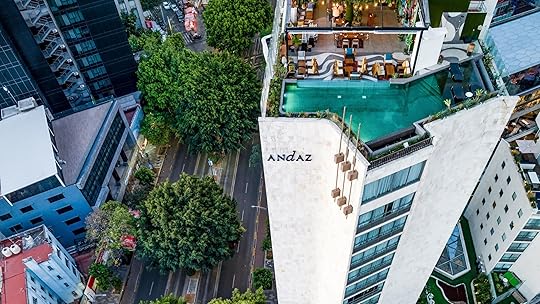 Photo courtesy Andaz
Photo courtesy Andaz Photo courtesy Andaz
Photo courtesy Andaz Photo courtesy Andaz
Photo courtesy Andaz Photo courtesy Andaz
Photo courtesy AndazA hotel that serves a high-class buffet breakfast on its rooftop patio is always welcome, but especially after a late night celebrating a World Cup match. Andaz, a Hyatt subsidiary, is a comfortable hotel in a walkable location just south of Parque México. Rooms are contemporary with design elements that reflect the building’s mid-century modern aesthetic. The rooftop pool offers a spectacular view.
Book NowMore like thisEpic StaysThe Most Gorgeous Airbnbs in Roma Norte, Mexico City’s Artsiest NeighborhoodVolga Photo: Tim Wenger
Photo: Tim Wenger Looking down. Photo: Tim Wenger
Looking down. Photo: Tim Wenger The "swimming channel." Photo: Tim Wenger
The "swimming channel." Photo: Tim Wenger Looking out at the city from the rooftop bar. Photo: Tim Wenger
Looking out at the city from the rooftop bar. Photo: Tim WengerJust off Av. Paseo de la Reforma In Juárez, Volga is one of the most unique hotels in Mexico City. Each room overlooks a central interior lounge, with a rooftop “swimming channel” and bar that overlooks the city. Its restaurant, Elora, blends Mediterranean and Mexican flavors and highlights the hotel’s incredible cocktail program.
Check out Matador’s full review of Volga
Book NowWhere to eat, play, and stay in Coyoacán for the 2026 World Cup
Photo: Santiago Castillo Chomel /Shutterstock
Distance from stadium: 25 minutes by car
If you plan to mix soccer with cultural history, stay and play in Coyoacán. The neighborhood sits roughly midway between the city center and Estadio Azteca, and it has a vibrant local soccer culture of its own. Pumas UNAM, one of three pro teams in CDMX, plays its home matches here at Estadio Olímpico Universitario. A mural by iconic artist Diego Rivera is featured on-site, and the surrounding Ciudad Universitaria, UNAM campus swells with fans on match days.
Sports and Chips CoyoacánView this post on Instagram
A post shared by Sport & Chips (@sportandchips)
Every soccer-obsessed neighborhood needs a good sports bar, and in Coyoacán that bar is Sports and Chips Coyoacán. The local crowd hangs here alongside visiting fans, and all enjoy tapas plates and an endless flow of beers. Games are broadcast on the jumbotron-style screen in the center of the room.
Sports and Chips Coyoacán: Avenida Miguel Ángel de Quevedo, San Andrés 1144, Coyoacán, 04040
Where to stay in CoyoacánFirst-floor loft with private patio Photo: Airbnb
Photo: Airbnb Photo: Airbnb
Photo: Airbnb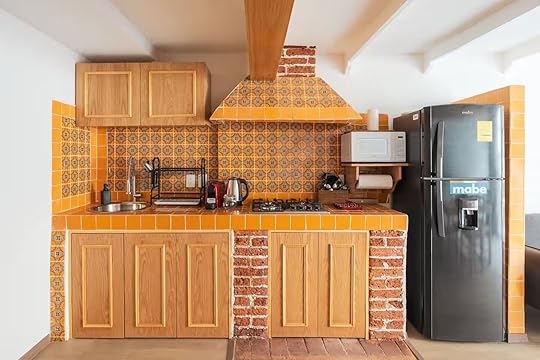 Photo: Airbnb
Photo: Airbnb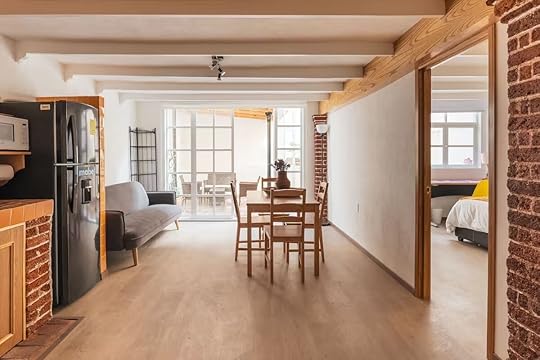 Photo: Airbnb
Photo: AirbnbThis first-floor loft in Mexico City is perfect for soccer fans who want to partake in a walking tour, with easy access to the market and surrounding murals. Its also only a quick rideshare to the UNAS stadium. Featuring a private patio, the space provides an inviting outdoor area to relax. The interior boasts contemporary design elements, including a fully equipped kitchen, high-speed Wi-Fi, and enough living space to chill between matches.
Three guests, one bedroom
Price: From $100 per night
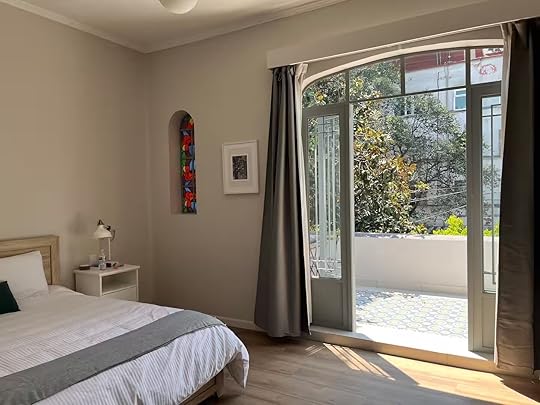 Photo: Airbnb
Photo: Airbnb Photo: Airbnb
Photo: Airbnb Photo: Airbnb
Photo: Airbnb Photo: Airbnb
Photo: AirbnbA patio is a necessity in Mexico, and this apartment offers a private one that is a good place to pregame before heading to the pub or the stadium. From here, you can walk or head to the transit station to get around, or call a rideshare to pick you up right out front. The bedroom opens right onto the patio, making this a great spot for couples.
Two guests, one bedroom
Price: From $100 per night

Photo: Marcelo Rodriguez/Shutterstock
For the easiest access to Bosque Chapultepec, commonly called Chapultepec Park, Polanco is the place to be. This upscale neighborhood is the place for high-end dining and shopping (the iconic restaurant Pujol is located here) and the area has a distinctly international vibe. It’s possible to rent Airbnbs atop high-rise luxury apartment flats to enjoy both the atmosphere of Polanco as well as expansive views of the CDMX skyline. Importantly, there are plenty of soccer bars within walking distance.
La Cervecería de Barrio PolancoView this post on Instagram
A post shared by La Cervecería de Barrio (@lacerveceriadebarriomx)
La Cerverceria de Barrio is a chain with locations throughout the center city, and its Polanco outpost is particularly great for watching matches. The bar fills up and tends to git a bit rowdy, depending on who’s playing. The spot is especially popular when Mexican, American, and European teams play, with flowing beers turning the space into a festive hub of energy.
Cerveceria de Barrio: Euler 145, Polanco, Polanco V Secc, Miguel Hidalgo, 11560
SylvestreView this post on Instagram
A post shared by Sylvestre (@sylvestre_mx)
The players, coaches, and directors of the World Cup teams have to eat too. Your odds of seeing soccer royalty are pretty high at Sylvestre, a high-end steakhouse that tends to draw a celebrity crowd. Make a reservation as late as possible and you never know who you’ll run into at the bar.
Sylvestre: Anatole France 74, Polanco
Where to stay in PolancoHistoric Polanco loft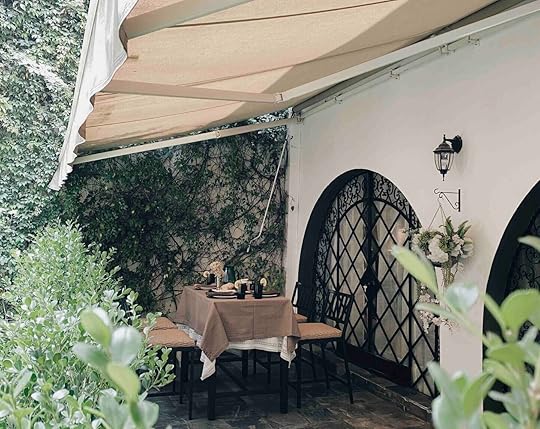 Photo: Airbnb
Photo: Airbnb Photo: Airbnb
Photo: Airbnb Photo: Airbnb
Photo: Airbnb Photo: Airbnb
Photo: AirbnbThis historic Polanco loft blends vintage charm and modern comfort. The space features high ceilings, exposed brick walls, and large windows that flood the interior with natural light, creating an inviting atmosphere. It’s equipped with contemporary amenities, including a fully stocked kitchen and high-speed Wi-Fi, and is within walking distance to the heart of the neighborhood. To get to the FIFA Fan Festival you can walk, bike, or book a rideshare.
Two guests, one bedroom
Price: From $200 per night
 Photo: Airbnb
Photo: Airbnb Photo: Airbnb
Photo: Airbnb Photo: Airbnb
Photo: Airbnb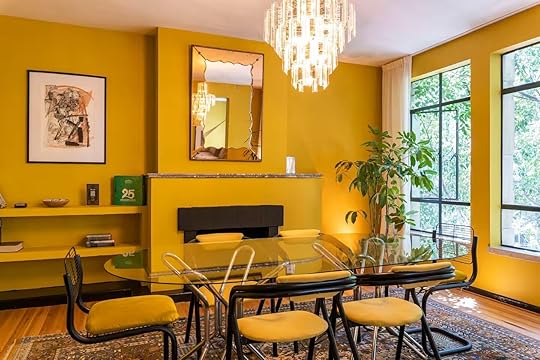 Photo: Airbnb
Photo: AirbnbViews of the city abound from this large flat high above street level. Polanco is all about stylish living, and this spot embodies that through an open floor plan with a cozy courtyard, onsite laundry, and a classic taco shop right up the road. This rental is affordable and great for groups and families.
Eight guests, three bedrooms
Price: From $200 per night
Where to Eat, Play, and Stay in San Francisco for the 2026 FIFA World Cup

San Francisco, with its iconic hills and sweeping bay views, will be a global focal point when the FIFA World Cup 2026 comes to Levi’s Stadium (and the wider Bay Area). While 16 cities will host the games, SF’s are bound to be among the most popular, given what a hub it is for sports and international cooperation. The city’s soccer culture is strong, matching the Bay Area’s broader identity of diversity, community, and following creative passions.
The city’s soccer tradition dates back more than a century, started by the San Francisco Soccer Football League (SFSFL). It was founded in 1902 — making it older than FIFA itself — and is one of the oldest amateur leagues in the US. Like many major coastal cities, SF is incredibly diverse, and the city’s immigrant communities, including Mexican, Italian, Chinese, Irish, Russian, and many more, mirror the World Cup’s international spirit. Each nationality brings their own soccer traditions, making match days a global celebration. During the World Cup, this will likely be amplified more, when taquerias in the Mission, trattorias in North Beach, and pubs in the Haight become unofficial fan zones.
The San Francisco World Cup matches will be at Levi’s Stadium, and while it’s technically in Santa Clara, most guests will likely be staying in SF since it’s accessible on public transportation. (Take BART to Milpitas Station, the switch to the VTALight Rail to the Great America Station). SF also has far more to do for visitors than Santa Clara.
In summer 2026, the Bay Area will host six matches of the 2026 FIFA World Cup. That includes five group stage (first round) games on June 13, 16, 19, 22, and 25, 2026; and one round of 32 match on July 1, 2026. More information on games and ticketing will be available on the page.
Here’s where to eat, stay, and play to make the most of your trip to San Francisco during the 2026 FIFA World Cup.
We hope you love the spaces and stays we recommend for the FIFA World Cup! Just so you know, Matador may collect a small commission from the links on this page if you decide to book a stay.
Sporty things to do in San FranciscoSF is one of the most vibrant cities in the country, and one of the most friendly to tourists. Most visitors will want to hit highlights like walking through Chinatown, seeing the Golden Gate Bridge, and listening to the sea lions at Pier 39. But if you’re in the city for the San Francisco World Cup matches, the activities below have a slightly sportier slant.
Support a local team
Photo: Nattawit Khomsanit/Shutterstock
SF doesn’t have an MLS team (yet!) but that doesn’t mean it’s without talent. Visitors can catch a San Francisco City Football Club, or SFCFC, match, at historic Kezar Stadium in Golden Gate Park. It’s a supporter-owned club that competes in USL League Two with extremely passionate fans. If you’re into catching a top-tier women’s soccer game, get tickets for a Bay FC match. It’s the Bay Area’s National Women’s Soccer League Team, and plays at PayPal Park in San Jose (about 45 minutes south of SF).
Depending on when you visit, however, you may be able to catch an MLS-affiliated game. In May 2025, SF Mayor Daniel Lurie announced that SF was getting a brand-new Major League Soccer Next Pro team (the league just one step below professional MLS). It’ll be called the Golden City Football Club, and they’ll play at a newly renovated Kezar Stadium — but no word yet on exactly when the team will arrive or renovations will be underway.
Tour Oracle Park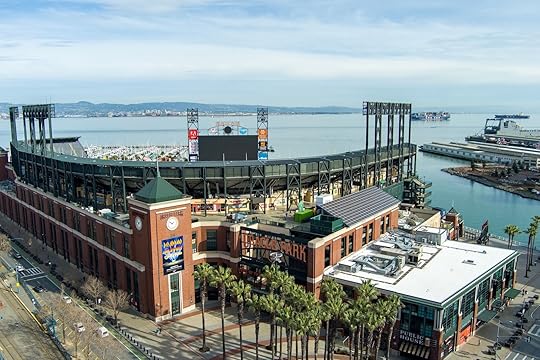
Photo: Marcus E Jones/Shutterstock
Overlooking the San Francisco Bay, Oracle Park is more than just the home of the Giants — it’s a central point for sports throughout the city. And if you’re a fan either of baseball, or of SF’s sporty history, you may want to take a behind-the-scenes tour at Oracle Park. Visitors get to see spaces typically reserved for players and press, including the dugout, field, and broadcast booth. There’s also a Giants Hall of Fame, telling the story of the team (which started in New York). Displays range from vintage uniforms to World Series trophies. It’s a worthwhile stop for sports fans or architecture buffs, especially as it’s often noted as one of the most scenic stadiums in Major League Baseball.
Hang out at a FIFA Fan Festival
Photo: ArtNat/Shutterstock
FIFA World Cup organizers have announced that a priority of the 2026 World Cup is to make soccer available to all. And with that will come a series of continuation of the official in each host city. The Bay Area will likely have a few throughout SF, Oakland, or San Jose, with large outdoor screens showing live matches, music and entertainment, soccer-themed games and outdoor things to do, and food and drink vendors. Exact sites haven’t been announced, but they’re usually in central locations that can accommodate large crowds. They’re free to attend, and can be a great place to hang out, whether you have tickets to any actual matches or not. More detailed programming on the Fan Festivals is expected to be announced by local organizers and FIFA in early 2026.
Try a new sport
Photo: Airbnb
Sure, the players on most of the World Cup teams may be in their 20s, but there are plenty of other sports with strong ties to San Francisco where the most famous athletes are in their 40s and beyond — looking at you, Tony Hawk. Skateboarding may not have been born in the Bay Area, but it has strong historical and cultural ties to it. The city’s steep hills have been a training ground for skateboarding legends, and tons of skate and skate culture brands are based in the Bay Area. So it may be fun to try something new by taking a skateboarding class in the city’s renowned Waller Skatepark in Golden Gate Park. Your teacher for the Airbnb experience, which is suitable very much for anyone of any age, is Karl Watson, a former pro skateboarder and founder of a skateboard company. Over two hours, he’ll teach you the basics, from balance to breaking to (eventually) sweet kick flips.
Book NowGo for a city-view hike
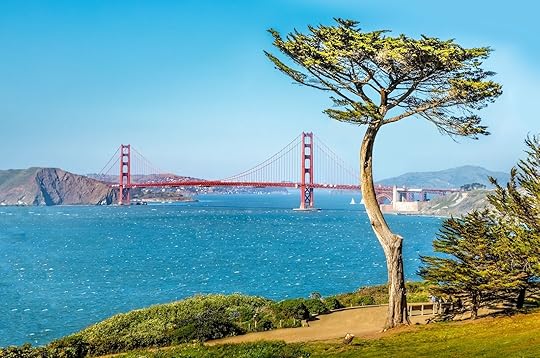
Photo: Martina Birnbaum/Shutterstock
You don’t have to be a pro soccer player to get in a workout in San Francisco, and there’s no better trail for getting in some gentle cardio than the pretty Lands End Trail. It’s a scenic coastal hike with panoramic views of the Pacific Ocean, the Golden Gate Bridge, and the Marin Headlands just across the Bay. It’s only about 3.4 miles round trip, with an elevation gain of around 500 feet, making it accessible for most fitness levels. It’s well-maintained and hikable all year, going past interesting sites like the Sutro Baths ruins, Mile Rock Beach, and the USS San Francisco Memorial. The trail is part of the Golden Gate National Recreation Area, but there’s no entrance fee.
The trail starts at the Lands End Lookout Visitor Center, reachable by public transportation on the Muni Bus Muni bus lines 38-Geary line (the 48th Ave stop).
Where to eat and drink during the SF World Cup matchesView this post on InstagramA post shared by The Valley Tavern (@valleytavernsf)
San Francisco is loaded not just with sports bars, but with soccer bars. We asked a local soccer expert to recommend some of the best for watching the 2026 World Cup games in San Francisco for readers keen on fully soaking in the sports vibes. But with so many good options available, you’ll want to consider the bars below for watching the San Francisco World Cup games, too.
Danny Coyle’sDanny Coyle’s opened on the first day of the 2026 FIFA World Cup and is a cornerstone for soccer fans in the city. It has a central location (Haight and Pierce), but what truly makes it unbeatable for soccer is its role as the official home for multiple fan groups, including the Tottenham Hotspur (the first official West Coast club), Manchester United, Bayern Munich, Borussia Dortmund, and the Seattle Sounders. All those teams will have multiple players fielding teams in 2026, so expect a lot of good-natured (and not-so-good natured) rivalry. Danny Coyle’s is packed for World Cup games, opening as early as 7 AM to accommodate international kickoffs and drawing crowds that fill the space with chants, scarves, and jerseys from around the world.
Dany Coyle’s: 668 Haight St, San Francisco, CA 94117
The Valley TavernFor big crowds and a bigger beer list, head to The Valley Tavern. It’s in Noe Valley with a three-level beer garden and 17 flat-screen TVs indoors and out. The bar consistently draws large crowds for major tournaments, including the Women’s World Cup, creating a lively and exciting atmosphere to rivals any fan zone in the city. It also has more than three dozen beers on draft. Staff are known to accommodate requests for specific matches, and the bar’s own soccer team (“The Old Men of Noe Valley”) adds a grassroots connection and ensures the bar is always full of knowledgable players.
The Valley Tavern: 4054 24th St, San Francisco, CA 94114
Clara’s JunctionIf you find yourself without tickets to the San Francisco World Cup games, there’s a chance you may be able to scalp a ticket if you stand outside the venue (and have a little extra luck that day). But those who can’t quite find a way into the stadium can still be in good company at Clara’s Junction, just a five-minute walk from Levi’s Stadium. It’s a mixed-use, indoor-outdoor space with a beer garden and more than 20 beers on tap, plus lawn games, fire pits, and even a taco truck. It hosts a tailgate party during every 49ers game, and you can bet it’ll be hosting parties when the World Cup matches are happening just down the street, too. It normally doesn’t open until 11 AM, but it makes exceptions to open three hours before kick-off on game days. So we wouldn’t be surprised to see it open early on match days, either.
Clara’s Junction: 2221 Tasman Dr, Santa Clara, CA 95054
Where to Stay for the San Francisco World Cup
The San Francisco World Cup matches will be at Levi’s Stadium south of the city. Photo: Michael Vi/Shutterstock
The San Francisco World Cup matches will be at Levi’s Stadium, just south of the city in Santa Clara. That gives people traveling to the city lots of options for where to stay, whether you prefer to be in Santa Clara, in San Francisco, or just somewhere near public transportation.
Airbnb with outdoor movies near Levi’s Stadium

Photo: Airbnb
This rad two-bedroom Airbnb is in Santa Clara close to Levi’s Stadium, making it perfect for traveling couples or families who snagged tickets. And with a giant outdoor movie screen, you can watch the games for which you couldn’t snag tickets and still have the same al fresco feeling of being at the stadium. It’s an older home, but with a great price and ideal ratings from past travelers.
Book NowBest of both worlds in Oakland

Photo: Airbnb
Visitors going to a San Francisco World Cup match who also want to spend a few days seeing the city may want to stay in Oakland. This three-bedroom, two-bath Airbnb is walking distance from a BART (public transportation) station, so you can easily head south to Levi’s Stadium, or head west and be in downtown San Francisco in about 10 minutes. This home also comes with a private garden and newly renovated kitchen for the nights where you’re staying in instead of exploring the region’s epic dining scene.
Book NowLuxe Airbnb in the heart of SF

Photo: Airbnb
San Francisco has some of the coolest, most luxurious, and most unique Airbnbs in the world — after all, Airbnb started in San Francisco. If money is no object (which is it may be for travelers who already shelled out for World Cup tickets), you can’t beat this gorgeous, one-of-a-kind Airbnb smack in the middle of the city on Mount Sutro. It’s two stories and has gorgeous views, as well as tons of big TVs and projector screens for catching every match. It’s not cheap, but with five bedrooms, you can fill it with your soccer-loving friends and make the price per person a little more bearable. 
This Barcelona Hotel Is the Ultimate Extravagance, and It Doesn’t Disappoint
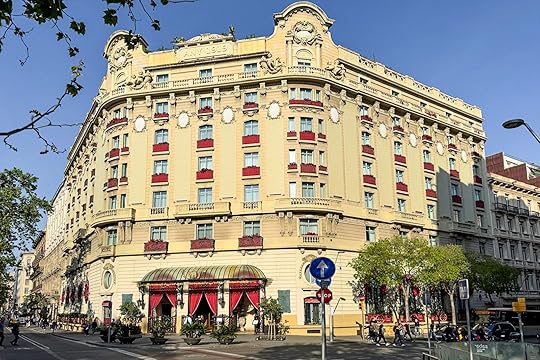
There’s something quite perverse about being a travel writer. Because you get to experience some of the most opulent travel offerings out there, you tend to think that you’re a little bit rich. But you’re not. Your day-to-day life is far from ritzy, and your finances are nowhere near what’s considered robust. Of course, reality should never deter you from acting like an affluent traveler when the occasion presents itself. That’s certainly what I did on my recent stay at El Palace Barcelona, a five-star hotel that, during its 100-plus years of existence, has welcomed the likes of Josephine Baker, Salvador Dalí, and Umberto Eco. And now, me.
A grand entrance, literally
Photo: Morgane Croissant
After seven days of Mediterranean sunshine and gourmet food aboard Holland America’s Zuiderdam, I wanted to end my lavish time abroad on a very high note — like the elaborate icing on an already beautiful, very sweet tiered cake. So, I disembarked the ship, hopped in a taxi, and made my way to Barcelona’s central Eixample District (a stone’s throw from the the famous Las Rambalas boulevard) to check in at the luxurious El Palace Barcelona.
Because I know when I’m required to dress up a little, that morning I’d slipped on my very best summer dress (now free of the pizza stains from a couple of days prior), selected my most elegant handbag, and wiped the greasy fingerprints from my $60 sunglasses.
While the El Palace’s Beaux-Arts facade is impressive, I’d readied myself for its grandeur and kept my cool when the taxi stopped by the entrance. My partner, not so much. He gave me a look that conveyed feelings of surprise, delight, and genuine fear. I ignored him, held my chin high like anyone born with a silver spoon in their mouth would, and acted like I belonged there. Fake it till you make it is the motto I live by.
When the porter rolled my very scuffed-up Roam suitcase inside, however, I came back down to earth a little. Thankfully, my partner’s elegant Pacific Sterling carry-on saved us from being exposed as the frauds we were. Phew.
If El Palace’s exterior of doesn’t make it clear enough, the lobby will: this is a very, very fancy place. Not Marriott Autograph Collection fancy but Ritz-Carlton fancy. Picture a giant, glittering chandelier; marble floors, walls, and columns; large curving staircases; enormous bouquets of fragrant flowers; and smiling, uniformed staff — the whole nine yards.
Thinking we were the real deal, the considerate personnel at reception immediately checked us in and sent us to the verdant rooftop terrace where we could wait until our room was ready. We were kindly provided with a voucher for a glass of cava each and some nibbles, both of which we enjoyed alongside panoramic views of the city. We could have stayed there all afternoon, taking advantage of the pool and enjoying the shade of the abundant and luscious plants, but our room became available in no time, and we were keen to see our swanky digs.
Rooms and suites fit for a hotel with palace in the name
Photos: Morgane Croissant
Because my reservation said Classic Room, I was expecting the 409-square-foot accommodation advertised on the hotel’s website. While far from modest, at just over $1,000 per night, it’s the smallest and cheapest class of room the hotel has, and I was mentally prepared for it. But the generous people at El Palace had other plans. After picking us up from the rooftop terrace, the concierge led us to the César Ritz Suite on the third floor. We’d been upgraded, big time. That I was not prepared for.
El Palace comprises 120 rooms and suites, and the César Ritz Suite is one of the most palatial. The suite, with its 1,600-plus square feet of space, pays homage to the Swiss hotelier and founder of the hotel who passed away in 1918, one year before it opened. César Ritz’s gold-framed portrait hangs in the suite’s sitting room. Because, yes, a suite this size has a sitting room, as well as a dining room, a bedroom, a powder room, a bathroom complete with a mosaiced Roman bath, a foyer, and a large corridor that serves as an immense walking wardrobe. It’s so big, in fact, that I could not find my way to the restroom when I woke up in the middle of the night.

Photos: Morgane Croissant
But size is only a small part of what made this particular suite extraordinary. What stopped me in my tracks and made my eyes grow wide were the beautifully crafted glass-and-gold chandeliers, the Louis XVI-style furniture, the objets d’art (small decorative items), and the TVs cleverly disguised as antique mirrors. Never in my life had I seen such sumptuous decor, except maybe on a visit to Versailles, but I wasn’t able to touch the goods and sleep there, so it doesn’t count.
The César Ritz Suite also has three immense windows, all of which provide views on the Gran Via de les Corts Catalanes, the longest street in Catalonia (the northeast Spanish region of which Barcelona is the capital) and the city’s thoroughfare. The small wrought-iron balconies covered in blooming red geraniums are the perfect spot to people-watch and show the world how vastly richer you are than everyone else.
If the César Ritz Suite isn’t your speed, there are a few more special suites to choose from, all singularly decorated to match the personality of the visiting or local artist they were named after. My personal favorite is the Josephine Baker Suite with its joyful floral decor, but the Salvador Dalí Suite with its ostentatious four-poster bed is a close second. Just be aware that it’ll cost you over $4,000 per night, no matter which one you book. Will they soon name a suite after me? Time will tell, but my confidence is at an all-time high.
A suite of restaurants and an underground speakeasy
Photos: Morgane Croissant
There are six food and beverage venues at El Palace. Months earlier, when I was planning this trip, I managed to book the only one that was unsuitable for me: Amar. The gastronomic seafood restaurant not only resembles the inside of a gorgeous, velvety jewellery box, but it’s also praised for its refined food and excellent service. Sadly, because I’m a hardcore vegetarian, I was not able to indulge. That said, I took a peek inside, and it did very much look the part.
What I was able to test out, however, besides the lovely rooftop garden, is The Hall. Arguably the most beautiful room in the entire hotel, it’s where guests can enjoy afternoon tea, drinks, and a casual meal. Because it’s right off the lobby, some people walk from the street and ask reception if they can snap a picture — it’s that glitzy and ornate. So much so, in fact, that my partner and I assumed that we had to dress up to the nines for dinner. In reality, we could easily have shown up in much more laid-back outfits — the vibe and the food are informal. I had an avocado panini and delicious patatas fritas (in Spain, typically thick-cut french fries) in my black velvet dress and felt a little silly.
El Jardín, tucked away just off The Hall is where guests can enjoy a buffet breakfast with a huge variety of items to suit every taste. The space is very much like a glass conservatory, with many plants, wrought-iron furniture, and even a central fountain. Unfortunately, because I had to catch a very early flight, I was not able to experience breakfast at El Jardín. However, the staff thoughtfully prepared my partner and me a generous to-go breakfast package that consisted of juice, water, fruit, sweet treats, and savory sandwiches.
As a non-drinker and non-smoker, I missed out on the hotel’s underground speakeasy and cigar room, both of which look plush and cozy with big leather armchairs, a fireplace, low lighting, and Persian rugs galore. The speakeasy doubles as an intimate jazz club, and if you can time your stay with a performance, it’s bound to be very special.
The spa that I didn’t get to try
Photos: El Palace Barcelona
My short stay didn’t allow me to take advantage of the hotel’s Mayan Luxury Spa, but I very much wish it did. I’m a sucker for any sort of body or facial treatment and would have loved to experience the spa’s tempting offerings. I could have easily done with a Caribbean Seashell Massage, a Chocolate Extasis Ritual, a Mayan Holistic Massage, or a Wine Therapy Cure — even though I have no idea what those are exactly. Even a quick session in the spa’s pre-Hispanic sauna (“built according to the traditions of Mayan culture,” as the brochure says) would have made my day.
The location that I did get to test out
Photo: Morgane Croissant
On top of it all — the beautiful decor, the great service, the abundant food and beverage options, and the Mayan Spa — El Palace is also perfectly located for you to see the city’s main sights on foot.
The Plaça de Catalunya (a large, bustling plaza) is eight minutes away, and Barcelona’s Arc de Triomf (an architectural memorial arch) is a 15-minute walk from the entrance to the hotel. It’ll only take you 20 minutes to reach the famous Gothic Quarter, with its narrow alleys full of great little independent shops, its amazing cathedral, and the Mercat de la Boqueria (the most beautiful covered market I’ve had the privilege to visit).
My partner and I had been to Barcelona twice before this particular visit, and thanks to the hotel’s location, we managed to see some of the spots we’d missed before. All in the space of a couple of hours and without having to ride the metro or hire an Uber.
If you’re a little more ambitious, you can walk to La Sagrada Família from the hotel in 30 minutes, but it’ll take you nearly an hour to get to Park Güell. And if it’s more of Gaudi’s creations you’re after, you can easily reach Casa Batlló (10 minutes) and Casa Mila (15 minutes) from El Palace. 
Piñon Court by La Fonda: The Perfect Base for a Walkable Santa Fe Getaway

There are a few things I consider essential to a good road trip: snacks, a solid playlist, the right companions, and a loose itinerary with space for spontaneity. Most importantly, I want a place to stay at the end of a long drive where I can park my car and not step back into it until the next leg of the journey.
On a road trip to New Mexico, I found just that at Piñon Court by La Fonda in Santa Fe. The property sits between two popular districts in the state capital. A half-mile walk in one direction took me to the Railyard District for a lively farmers market and art market. Half a mile the other direction, I was in the heart of Santa Fe Plaza to see Indigenous Peoples Day performances and browse vendors selling traditional jewelry.
It proved to be the perfect base for this leg of the trip. My mom, sister, and toddler daughter had made most of the drive from Denver with me the day before and we spent one night at the (probably) haunted Castaneda Hotel in Las Vegas, New Mexico. We were set to spend a few nights in Santa Fe to meet up with my wife, who flew in for the weekend. We had no formal plans other than to eat as much New Mexican food as we could and soak up Santa Fe’s architecture and famous art scene.
We hope you love the spaces we recommend! Just so you know, Matador may collect a small commission from the links on this page if you decide to book a stay.
A 1930s adobe motor court modernized for 21st-century guests
Photo: Booking.com
BookThe building didn’t become Piñon Court by La Fonda until 2022, but it has a long history. It started as the Galisteo Inn in the 1930s and catered to travelers drawn by the sunshine and dry weather. At the time, tuberculosis and other respiratory diseases were rampant, and doctors often recommended escaping humidity — giving the Southwest a distinct reputation for wellness. Santa Fe’s natural beauty, which artists like Georgia O’Keeffe helped share with the world, was another draw. This was also the age of Route 66 and the birth of motels — a style of accommodation that got its name from a mash up of motor and hotel. Santa Fe is right along the old Route 66 and was a popular stop for road trippers following the road.
The Galisteo Inn thrived in this era, but couldn’t keep that magic forever. The hotel closed, and the building was used for office space in the mid-1900s. In 1991, real estate developers purchased the building to restore it as a boutique hotel. Construction didn’t finish until 2003, when it was rebranded as the Old Santa Fe Inn. Then, in 2022, the La Fonda hospitality group purchased the property. That same year, Piñon Court was recognized by Historic Hotels of America. The building retained its Pueblo Revival style — also called Santa Fe style — characterized by adobe walls and wooden roof beams called vigas, which extend beyond the exterior walls. (During my stay, ristras, those iconic bundles of chiles found across New Mexico, hung from the vigas.) The new owners undertook a series of renovations and upgrades while staying true to the original aesthetic and architecture. Rooms and the common areas were refreshed, and a restaurant-lounge was added for on-site dining.
And, of course, the new owners changed the name once again. The name Piñon Court pays homage to the piñon pine, New Mexico’s official state tree since 1949 that’s loved for its pine nuts and aromatic wood.
Rooms at Piñon Court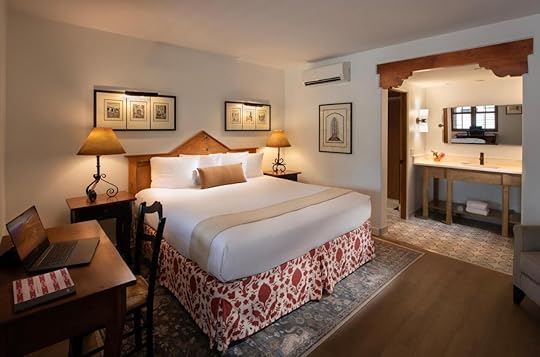
Photo: Booking.com
The 58-room, pet-friendly property offers a variety of styles. Some have a patio or balcony, others a kiva fireplace — the beehive-shaped fireplaces built into the corners of adobe homes since the Indigenous Pueblo times. All rooms are decorated with locally inspired art, such as prints by Santa Fe artist Willard Clark.
We booked one classic queen room — just the right size to fit our toddler’s pack-and-play in the closet — and a king room with a fireplace and patio. We often spent our downtime on that patio, where a high wall muted the traffic noise from the street. There was space and seating for the five of us to break into all of the honey, fresh bread, fruit, and other snacks we picked up at the Santa Fe Farmers’ Market.
Dining and amenities at Piñon Court
Photo: Booking.com
Staying true to the original motor lodge concept, there’s plenty of parking and a space is included in the $25 resort fee. A guaranteed spot for your car that’s within easy walking distance of key parts of town is easily overlooked by travelers unfamiliar with downtown Santa Fe’s parking challenges. Having a car is convenient for exploring farther reaches of the city, like Museum Hill. But that convenience fades when visiting central Santa Fe, where parking can be hard to come by. A courtyard parking lot encircled by rooms — combined with Piñon Court’s highly walkable location — puts any concerns about parking to rest.
In the mornings, the hot breakfast bar has coffee, breakfast burritos, and other staples. The indoor space and patio transform into the Bistro at Piñon Court later in the day, featuring a menu focused on local ingredients and regional flavors. Stop by during happy hour to enjoy regional beer and wine, as well as cocktails that highlight New Mexico spirits.

Photo: Booking.com
Other amenities, like a fitness center and spa, are located off-site at the sister property La Fonda, half a mile away. Piñon Court guests can receive special discounts on spa services when booking through the front desk.
There are just enough amenities on-site to stay comfortable if you don’t feel like venturing out. But the true benefit to staying here is quickly realized by putting on your walking shoes. 
This Eco-Friendly Lodge Offers All-Inclusive Adventure in Patagonia

It’s not every day your massage runs late because a puma is draped over the spa’s doorway. That’s the reality of staying at Hotel Las Torres Patagonia: one of the few hotels within the limits of Torres del Paine National Park where we humans are very much the guests of the resident fauna and flora.
Originally a working ranch, this private nature and cultural reserve inside Chile’s hypnotic national park has been in the hands of the Croatian-Chilean Kusanovic family for generations. It was Antonio Kusanovic Jercic and his wife, Amor Eliana Marusic, who cautiously opened their home to adventurers enticed by the granite peaks and glacial landscapes of the Magallanes and Chilean Antarctica region. After these humble lodgings and home-cooked meals proved a hit in the 1990s, an eco-boutique hotel complete with a sustainable restaurant and bar, spa, organic garden, and stables attended by baqueanos/baqueanas eventually supplanted the estancia.
Open seasonally during the Chilean summer and early fall, these 72 rooms and suites are upscale base camps with the comfort of a five-star hotel but the soul of the mountains. This isn’t the kind of all-inclusive where you’ll be lolling around over room service: a stay at Hotel Las Torres Patagonia is all about getting outdoors (on foot or on horseback) and, hopefully, encountering a puma or two.
We hope you love Hotel Las Torres! Just so you know, Matador may collect a small commission from the links on this page if you decide to book a stay. Listed prices are accurate as of the time of publication.
All-inclusive adventure in Chilean Patagonia
Photo courtesy Jonathan Barría Arjel
Operating as an all-inclusive, all packages include full board, round-trip airport transfers, and a choice of 40 excursions focused on nature and culture. Even getting to Las Torres from Punta Arenas Airport is rolled into the guest experience. Although a handful of flights do serve Punta Natales (a 90-minute drive from the hotel), the older, southerly terminal maintains more frequent connections with Santiago. The five-hour journey north past glacial fjords and windswept grasslands flecked with wild guanacos is broken up with a pitstop at Estancia Cerro Negro for once (“on-say,” – Chilean teatime).
After indulging us with pastries, the baqueana and heir to the estancia, Ninoska “Nino” Belén Kusanovic Olate, showed us around her family’s original farmhouse and demonstrated sheep herding with her Patagonian sheepdog – a hardy Barbucho Magallánico with European origins native to the region. This experience lays bare the tougher realities of living in Chilean Patagonia (the bracing winters is why Las Torres only opens between October and April) and dives into how traditional agriculture has innovated over the years to compete with modernization and the rise of synthetics. Spending time with Nino at the ranch serves as the perfect introduction to Patagonia; I’d encourage all travelers curious about rural culture to fly into Punta Arenas.
Arriving at the hotel under a pollution-free night sky meant being spellbound by the scenery of Torres del Paine would have to wait until morning. This brought a Christmas-Eve-level of anticipation and I flopped under the covers eager to see what the light of day would bring. My room was perfectly fit for its purpose with a firm mattress for restoring weary limbs between hikes and reliably hot water in the chic en suite. Practical storage racks helped me prepare for what lay ahead with plenty of spacing for coordinating apparel and readying my fetching new pack, courtesy of this eco-forward hotel. Fashioned from recycled plastics, these waterproof hiking totes are gifted to every guest along with a neck gaiter and stainless steel bottle to refill in the streams streaking through the park.
As for the view, it didn’t disappoint: a soaring view of Cerro Almirante Nieto greeted me through my window. Conveniently, this hulking mountain serves as a handy navigation tool on the trails.
A boutique stay on the trail of Base Torres
Photo courtesy Hotel Las Torres
Staying at Las Torres puts you within walking distance of the national park’s iconic day hike, Base Torres, and spares the shuttle bus commute from Punta Natales. The 11.5-mile (19 km) hike weaves through the windy Ascencio Valley and Patagonian lenga forests before reaching the lookout at the foot of the triumvirate of granite towers.
While it’s possible to explore most trails independently, enlisting the company of the hotel’s guides is highly recommended. Besides sage insight on regional culture and nature, the guides bring a relentless energy to every outing. Our group particularly enjoyed Benjamin’s use of props while explaining the geology of Cuernos del Paine – his pop quizzes were less appreciated. We were equally charmed by Michelle’s unwavering cheer – and, later, the hotel’s complimentary hiking poles – as we heaved ourselves up the boulder-strewn finale of Base Torres. Las Torres also offers packages for the W and O circuits with options to sleep in the hotel’s campsites, cabins, or mountain hostels.
The stable houses a herd of gentle-natured Criollo horses who, in the company of baqueano and baqueana guides, carry us wannabe gauchos deep into the wilderness. After settling into the Corralero saddle (far comfier than any Western saddle) and being mentored on communicating with our steeds, we slowly trekked to Nordenskjöld Lake. The route dipped through rivers where the horses could hydrate and snaked along spine-tinglingly sheer ridges. Fortunately this breed is especially sure-footed and we all mastered the art of riding with only one hand on the reins. After our guides surprised us with a gallop (optional) across the plains we arrived back at the hotel just in time for sunset, my spa appointment – and that puma encounter.
Once the puma cub had rejoined his pack, I was ushered into a cozy chalet warmed by a woodfire and scented with the fragrance of rosemary and orange oils from a botanical store in Punta Natales. While untangling my knots with a deep tissue massage, my massage therapist joked that a massage would bring my heart rate back to normal. She went on to share how the mother puma and her three cubs are frequent visitors around dusk; they pose zero risk to guests as long as a respectful distance is maintained.
Therefore, if the prospect of a post-hike sauna or spot of wellness (hotel guests get 20 percent off any treatment whereas the sauna is free) was already on your mind, that’s another reason to go ahead and book in some dusktime R & R.
Sustainable cuisine and cocktails in Chilean Patagonia
Photo courtesy Hotel Las Torres
As the four pumas circuited the restaurant and spa, the park rangers did a fine job of keeping us onlookers safe while also encouraging us to appreciate the moment. This is what a stay at Las Torres always comes back to – respecting that we are guests in this ecosystem.
Sustainability took center stage at this family-owned hotel long before it went mainstream. In fact, the decision to relocate all livestock to Cerro Negro was the first step towards establishing a sustainable tourism ecosystem and the hotel also has its own environmental NGO, AMA. The lodge, thrice nominated for South America’s Leading Green Hotel in the World Travel Awards, has signed the Glasgow Declaration on Climate Action and pledged its milestones for achieving carbon neutrality.
Breakfast and dinner are served in Restaurant Coiró where dishes are curated with ingredients from the property’s orchard and greenhouse. I was surprised by the diversity: lamb shank, fish stews, comforting pasta dishes, and a salad of the day inspired by what was picked that morning. I wouldn’t hesitate to re-order Caldillo de Congrio (conger eel soup) or any starter containing mushrooms and beetroot grown in the plot. The hotel could get away with a smaller menu but it’s done a stellar job of covering all tastes with a balance of local flavors, national dishes, and comfort food. Most importantly, plates are sized with hikers’ appetites in mind.
Lunch and late-night bites of burgers, salads, and sharing platters are available in Bar Pionero. Helmed by Federico Gil – a Uruguayan cocktail wizard who fell for the charms of Chilean Antarctica – this is South America’s “pioneering” (get it?) sustainable bar. Guests are welcome to request a cocktail masterclass with Gil, learning how to prepare his signature tipples infused with calafate berries and native herbs. These are served in delicate vessels repurposed from glass bottles and straws handcrafted by Gil using Chilean copper. These are available to purchase in the property gift store alongside chunky knitwear, baqueano berets, and the hotel’s wine.
In addition to crafting his own lagers and ales, Gil also distills a deliciously botanical gin and a lightly spiced whisky exclusively for the hotel’s cocktail menu. He relies on glacial water and hops plucked in the greenhouse while any byproducts are pumped back to the garden to reduce waste. He broke my heart when he told me that, as per the hotel’s sustainability manifesto, the store doesn’t sell bottles of either spirit. But, I suppose that’s yet another incentive to return to Las Torres. 
The best pink beaches in the world

Most travelers probably think of sand at the beach being white or something close to that — perhaps a light tan. Or heck, some people may even know about black-sand beaches such as those in Hawaii. But what some people don’t know is that white and black aren’t the only options for sand — beaches can also be pink.
And it’s not just a subtle pink — some of the world’s most famous pink sand beaches are more like magenta or even have bright red sections. While all beaches are beautiful, it’s hard to find a natural sight prettier than the cerulean blue of the ocean lapping against the shore of a vivid pink sand beach. And it doesn’t hurt that the sand looks even pinker when wet.
These are the 13 most impressive pink sand beaches in the world, from Greece to Indonesia to Iceland.
What causes pink sand?
Photo: Sutiwat Jutiamornloes/Shutterstock
No matter where it is, sand is primarily made up of minerals from rocks, such as quartz and mica, that have eroded over time. Usually, there are also some tiny pieces of organic matter from the ocean mixed into the sand, such as coral and shells, that have either broken down and washed up on the beach or been processed into minuscule pieces by fish and ocean critters.
Beaches that have colorful rocks nearby like garnet, which has a red hue, may be brighter in color. And some of the best pink sand beaches in the world are on atolls, where the sand is made almost entirely of broken-down organic matter. If that organic matter contains organisms that are reddish in hue, like crimson-hued foraminifera (i.e., microscopic creatures that live on reefs), the sand on the nearby islands will be rosy, pinkish, or reddish.
Pantai Merah, Komodo, Indonesia
Photo: Raditya/Shutterstock
Indonesia’s Komodo Island is fascinating to most travelers for its komodo dragons, the largest lizards on Earth, but it actually has a lot more to appreciate. That includes hiking and swimming, boat tours, walks through undeveloped tropical ecosystems, and incredible pink sand beaches.
Komodo Island can be difficult to visit as most of it is off-limits to tourists to protect the komodo dragon population. So visitors who want to see it will have to take a boat tour from nearby Flores, or book a liveaboard trip — trips where guests sleep on a ship but do daytime excursions like scuba diving, snorkeling, or hiking around Komodo Island.
How to get there: Fly to Labuan Bajo (Flores) from Bali or Jakarta. From Labuan Bajo, join a private or group boat tour to Komodo National Park, which includes a stop at Pink Beach.
Flores Beach, Lombok, Indonesia
Photo: nelzajamal/Shutterstock
Visitors who don’t feel like making the extra effort to get to Flores will be happy to learn there are plenty of pink sand beaches on Lombok, a much easier-to-reach destination within Indonesia. Travelers can spend their days hiking Mount Rinjani, learning about the rituals of the local Sasak culture, surfing, or taking all manner of yoga classes, but it’s worth it to spend at least one afternoon at one of the island’s beaches.
Lombok has one of the most beautiful pink sand beaches in Asia, called Pink Beach. It’s on the southeastern part of the island on the Ekas Peninsula. It’s also easy to add on to a trip to the nearby island of Bali since there’s a very affordable ferry between the two islands as well as relatively inexpensive ($54–77 USD one-way when booked early) flights on Wings Airlines.
How to get there: Fly into Lombok International Airport. From there, rent a car or arrange a driver to the north or east coast beaches, depending on your exact destination. Many pinkish beaches are reached by road and sometimes by a short boat ride.
Elafonisi Beach, Crete, Greece
Photo: Patryk Kosmider/Shutterstock
There’s a lot to love about Crete, from coastal restaurants offering incredible local wines and food to ancient ruins and cliffside hiking.
Of course, there are also the beaches, each one seemingly more appealing than the next. But topping that list is Elafonisi. As if the cove-shaped sandbar, turquoise water, and peaks rising in the distance weren’t enough, there’s the bright pink sand itself. The color comes from the incredibly tiny pieces of seashells and calcified coral reefs that washed up on shore over the eons, creating for lucky visitors one of the most beautiful beaches in Europe.
How to get there: Fly or ferry to Chania, Crete. Drive or take a bus southwest to Elafonisi (about 1.5–2 hours from Chania). The beach is accessible by car, bus, or tour.
Pink Sands Beach, Harbour Island, Bahamas
Photo: Gus Garcia/Shutterstock
The blush-colored sand on this heavily visited island of the Bahamas is due to the foraminifera living in its reefs. When foraminifera wash up on shore, they tint the sand pink. Pink Sands Beach stretches nearly three miles, giving guests plenty of room to stroll without ever setting foot on white sand.
Alternatively, the large size also means there’s plenty of space for visitors to post up, alternating between snorkeling, sitting in the surf, or reading a book on the dreamily toned sand. While Harbour Island is most famous for its pastel-hued sand, the island also has lovely cafes and shops for when you need a break from the sun. The best way to get there is to fly into Nassau International Airport (NAS), then take a short domestic flight to North Eleuthera Airport (ELH).
How to get there: Fly to North Eleuthera Airport (ELH) via Nassau or direct from some U.S. cities. Take a taxi to the ferry dock, then a short water taxi to Harbour Island. The beach is a short walk or golf cart ride from accommodations.
Horseshoe Bay, Bermuda
Photo: EQRoy/Shutterstock
This tiny cove on the long, skinny island that is Bermuda is a pretty popular place. The contrast of the pink sand is especially striking, thanks to green foliage on one side and a blue ocean on the other.
It’s a small island, so guests are never too far from anything in Bermuda, which means the beach is just a 20-minute drive from downtown Hamilton. Of course, getting to Bermuda itself is a little more difficult, as it’s an isolated island in the Atlantic nearly 1,800 miles off the US mainland. FYI: Late winter is usually the best time to visit for warm enough weather to sit on the beach without the summer crowds.
How to get there: Fly into L.F. Wade International Airport, Bermuda. Take a taxi, shuttle, or public bus to Horseshoe Bay on the island’s south shore. The beach is well signposted and accessible by road.
Crane Beach, Barbados
Photo: byvalet/Shutterstock
Barbados is well-known in the expat community as being an easy place to get a work visa while living a luxurious lifestyle in a beautiful place. And when workers aren’t, well, working, they can hike, snorkel, surf, or enjoy the island lifestyle — and the island rum, as Barbados is the birthplace of rum. (By the way, do yourself a favor and take the Barbados rum train.)
But between surfing and rum training, guests will want to visit one of the most beautiful pale pink sand beaches in the Caribbean. Crane Beach is on the southwest side of the island, near Crane Resort. But don’t worry if you’re not a guest: while it looks like it’s part of the resort, all beaches on Barbados are public, so feel free to walk right in. It’s not super developed, but there are a few great nearby restaurants and bars for an afternoon break.
How to get there: Fly into Grantley Adams International Airport. From the airport, take a taxi, shuttle, or public bus to Crane Beach in St. Philip parish. There is public access via stairs or a glass elevator at The Crane Resort.
Pink Beach, Bonaire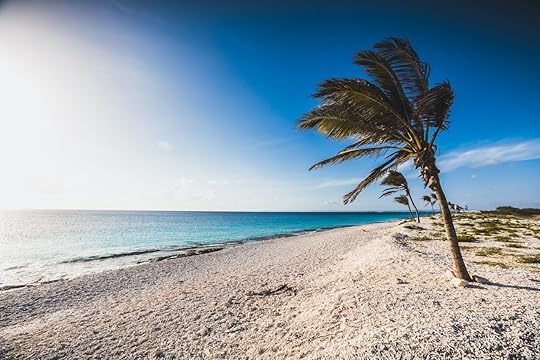
Photo: Andy Troy/Shutterstock
It may not be the brightest of the pink sand beaches on this list, but Bonaire has some of the calmest, most secluded beaches in the world. With endlessly perfect weather and calm seas, the island is very popular with snorkelers and divers.
Bonaire is the little-known “B” in the ABC Islands; Aruba and Curação are the better-known other two. All three were Dutch territories until recently; today, only Bonaire retains that status. While it’s much sleepier than its two neighboring islands, that pleasant sleepiness may be one reason its reefs are so well-preserved, making it a well-known destination for scuba diving from shore in the island’s clear and calm water. And there’s no better place to do a surface interval than on a pale pink beach.
How to get there: Fly into Bonaire’s Flamingo International Airport. Rent a car or take a taxi south along the coastal road to Pink Beach, located about 10 km southwest of Kralendijk. The beach is roadside and easy to access by car or bike.
Kaihalulu Red Sand Beach, Maui, Hawaii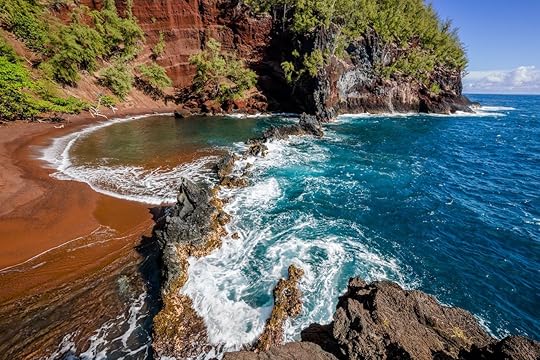
Photo: Shane Myers Photography/Shutterstock
Kaihalulu isn’t so much a pastel pink sand beach as it is a bold red beach. The deep red color comes not from coral and shells, but from what formed the Hawaiian islands themselves: lava. Hawaii is known for black sand beaches, which form when burning hot lava hits cold water. The cold water hardens the lava quickly, causing it to shatter into small fragments of basalt (which are black). This same process can also form red-sand beaches like this one when that lava is very rich in iron.
The trail to reach this beach, considered one of the best beaches on Maui, is steep and slippery, so use caution. That said, it’s near Hana Bay, so it can get crowded. Try to go mid-week in the off season for the best chance of being one of only a few visitors.
How to get there: Drive the Road to Hana to the town of Hana. Park near Hana Ballpark or the Community Center. Hike a short but steep and sometimes slippery trail (starting at the end of Uakea Road) to reach the beach. Use caution; the trail is narrow and can be dangerous.
Anse Source d’Argent, La Digue, Seychelles
Photo: Filip Fuxa/Shutterstock
For a more far-flung pink sand beach, head to Seychelles, a group of 115 islands off the coast of Tanzania. It’s known as a somewhat luxury honeymoon destination (as well as a top-notch scuba diving destination), but is also highly regarded for its gorgeous beaches. That includes “Anse Source d’Argent,” a sandy beach with huge boulders and lush palm trees. It’s the perfect example of a tropical island beach. But if that wasn’t good enough, the sand also takes on a pinkish hue when wet. Go during sunset for the max amount of pink glow.
How to get there: Take a ferry to La Digue Island from Mahé or Praslin. Once on La Digue, rent a bicycle or walk to L’Union Estate, pay the entrance fee, and follow the signs through the estate to the beach.
Rauðasandur Beach, Iceland
Photo: Ivan Kurmyshov/Shutterstock
Not all colorful beaches are tropical, as proved by Iceland’s Rauðasandur Beach, often just called “Red Sand Beach.” It runs for just over six miles in the island’s West Fjords. The changing hue of the sand comes from scallop shells, which can make it alternate between red, pink, and white.
While it’s a bit cold for most people to swim, it’s an excellent spot for wildlife watching as it’s home to seals, sea lions, puffins, and more.
How to get there: Drive or take the ferry to the Westfjords region. Follow Route 60 to Route 62 and then to Route 614 to access the beach. The last stretch is steep and winding; a 4×4 is recommended. Park near Melanes campsite or Saurbæjarkirkja church and walk to the beach.
Porto Covo, Portugal
Photo: AnaMarques/Shutterstock
Pink sand beaches are pretty rare, but if a pink-ish sand beach will do, swing by Porto Covo in Portugal. The color of the sand changes depending on the light, but it has pinkish hues. The area with the pinkest sand is a beach in a tiny cove surrounded by tall rock cliffs, and looks the most vividly covered on days with colorful sunsets. It’s about two hours from Lisbon, so it works as a long day trip or a quick overnight as part of a larger Portugal trip.
How to get there: From Lisbon, take a Rede Expressos bus (about 2–2.5 hours) or drive south on the A2 and then the N120. Since Porto Covo is a small coastal town, the beaches are easily within walking distance from the center.
Rabida Island, Galapagos
Photo: Don Mammoser/Shutterstock
There are few places more remote than Galapagos, and there are few places in the Galapagos more remote than Rabida Island. It’s unpopulated and has only one visitor landing site, so the only way to visit is by taking a boat tour. Rabida, also called Jervis Island, doesn’t have any pink sand beaches, but it’s a fair trade-off because it has some of the most vivid red-sand beaches anywhere in Ecuador.
Rabida is big with birdwatchers as it’s the home of the Darwin finches, named for the islands’ most famous 19th-century visitor. Most tours to the island include hiking and snorkeling, though the areas where visitors can go on the island are limited to protect other species such as fur seals and blue-footed boobies.
How to get there: Fly to Baltra or San Cristobal Islands (Galapagos). Rabida Island can only be visited as part of a Galapagos cruise itinerary, as there are no day trips from Santa Cruz.
Pink Sand Beach, Rangiroa, French Polynesia
Photo: lkpro/Shutterstock
Visitors who can spare an extra day away from the stunning islands of Bora Bora, Mo’orea, and Tahiti itself may want to tack on a trip to Rangiroa, an island in the Tuamotu Archipelago. Known for the luxurious Kia Ora Resort and the chance to scuba dive with dolphins, Rangiroa is a stunning place to visit, especially for travelers who visit the island’s Pink Sand Beach, at the southern tip.
It requires a boat ride to reach, so it’s best to book a trip to the beach from your hotel or via a travel agency rather than trying to reach it on your own. It’s a muted pink, but the color really pops against the turquoise of Rangiroa’s lagoon.
How to get there: Fly to Rangiroa from Tahiti or Bora Bora. From the main village (Avatoru), join a lagoon boat excursion to the Pink Sand Beach, located at the southeastern tip of the atoll. The trip takes about 1–2 hours by boat.
 More like thisBeaches and IslandsThe 11 Strangest-Looking Beaches Around the World
More like thisBeaches and IslandsThe 11 Strangest-Looking Beaches Around the World
8 Essential Stops for Outdoor Lovers in Charlotte, North Carolina

Yes, Charlotte brings all the benefits of a big city, with a busy international airport, major league sports teams, and a reputation for being the financial center of the Southeast. But as much as it buzzes with urban activity, it also hums with the sounds of nature, providing ample opportunities to slow down (or get active) and soak up the Carolina outdoors.
From parks and gardens to greenways and farms, the city and surrounding area are flush with outdoor spaces where you can unplug, take a stroll, hop on a bike, go for a swim, or pursue some downright thrilling fresh-air fun. For an outside-focused trip to Charlotte, these are the essential stops.
1. Plan a park day with the family…
Photo: Carissa Rogers/Anne Springs Close Greenway
Technically, Anne Springs Close Greenway is located in Fort Mill, South Carolina, but it falls within the Charlotte region — and that’s great news for anyone seeking a family-friendly day outdoors. Conservationist and philanthropist Anne Spring Close’s eight children donated the land 30 years ago, creating a perfect venue for kids to swap screen time for tree time among streams, lakes, hiking and biking trails, play structures, and a swinging bridge.
With or without little ones, pack a picnic and head to this 2,100-acre nature park for a quiet afternoon. Or grab a bite at the Greenway Canteen after a horseback ride, kayaking session, or maybe some yoga in the park.
2. …and then keep it going at another excellent green space.
Photo: Charlotte Regional Visitors Authority
Tennis, pickleball, batting cages, volleyball — those are just some of the activities waiting to be enjoyed at Freedom Park in Charlotte’s historic Dilworth neighborhood. In the heart of town, this is where local families meet for little league and visitors can get a breath of fresh air without leaving the city.
Among the neatly manicured lakeside lawns, a band shell serves as a community gathering point, hosting events like concerts in the park and alfresco film showings. It’s as quintessential as a city park can get.
3. Tackle rapids like an Olympian.
Photo: Charlotte Regional Visitors Authority
Some nature centers bring serenity — this one ups the adrenaline. In West Charlotte, the Whitewater Center’s main claim to fame is having the largest artificial whitewater river in the world, with Class II-IV rapids so impressive they’re used to train Olympic canoe and kayak slalomers. The channels aren’t just for the pros, however. Anyone aged eight and up can hop on a raft with a trained guide and give the whitewater a whirl on a gentler excursion, while teens and adults can opt for a “big water session” or “rodeo rafting” to let the rapids give them a whirl instead.
You can also avoid the water altogether. In addition to paddling sports of all kinds, the Whitewater Center has ropes courses, 50-plus miles of trails for hiking and mountain biking, and rock climbing walls if that’s more your speed.
4. Traverse the city’s greenery on foot…
Photo: Jon Bilous/Shutterstock
Little Sugar Creek Greenway is an accessible 19.5-mile park belt that connects Midtown Charlotte to the state line. Walk, jog, or bike the whole thing for an activity that’s both scenic and energizing, or take your time getting to know the points of interest along the trail.
Starting in NoDa, the mostly flat, paved trail navigates through multiple neighborhoods and a handful of other city parks. These include Cordelia Park, Alexander Park, and a newly opened entrance at Freedom Park.
5. …or go for a swim nearby.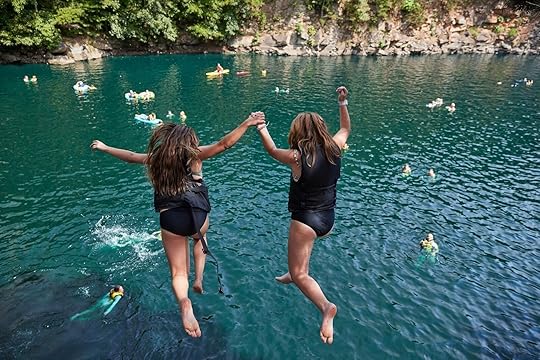
Photo: Charlotte Regional Visitors Authority
About 30 minutes north of Charlotte in Mooresville, Carrigan Farms is one of the area’s most popular nature escapes. It gets a lot of social media buzz for The Quarry, a natural pool where you can swim, float, and jump from rocks to cool off on hot summer days (reservations recommended). But the fifth-generation farm has more activities and photo ops up its 275-acre sleeve — just ask the couples who throw their weddings here on account of the stunning scenery.
Have the ultimate farm-to-finger experience by picking your own produce: strawberries, apples, or pumpkins, depending on the season. If you’re visiting in October, you might also be able to catch Scarrigan Farms, a Halloween-themed event featuring a haunted walking trail.
6. Get educational outside.
Photo: Carolina Raptor Center
Huntersville’s Latta Nature Preserve puts a scholastic spin on family-friendly outdoor exploration. As you pull into the park, one of the first things you see is Quest, a nature center with a massive freshwater fish tank, an interactive water table, and lots of other opportunities to learn and play.
Quest is one of the preserve’s two experiential centers. The other is the not-for-profit Carolina Raptor Center next to the Raptor Hospital, a rehabilitation facility for rescued birds. Walk the Raptor Trail to see birds of prey — think eagles, hawks, and falcons — and stick around for a bird show or fly-by to see what the incredible creatures can do.
With 1,480 acres to its name, the Latta Nature Preserve also has plenty of open space where you can do your own thing, whether that’s exploring its 16 miles of trails (open to hikers and horseback riders) or paddling on Mountain Island Lake.
7. Sip rosé among the roses…
Photo: Charlotte Regional Visitors Authority
Stop and smell the roses — literally. Between Uptown and the NoDa arts district, the McGill Rose Garden is a beautifully curated celebration of gardening that started as one woman’s passion project and is now a valued park in Charlotte. With over 500 rose bushes to admire (and plenty of charming pathways to wander) every turn is as pretty as a postcard.
After admiring all the blooms, swing by Rosie’s Coffee & Wine Garden for a warm latte or chilled glass of pink prosecco that matches the surrounding flowers. Note that children are more than welcome, but the tranquil garden has more of a grown-up vibe — not surprising since you enter through a bar.
8. …then walk to dinner via rail trail.
Photo: Kyo H. Nam/Charlotte Center City Partners
Public transportation is readily available in downtown Charlotte, but it’s much more memorable to get around via the Charlotte Rail Trail, a wide paved park lined with flowers and trees that takes you through the South End neighborhood. You’re almost guaranteed to see joggers running here on their way to a juice bar, but take it slow and you’ll be rewarded with cafes, breweries, restaurants, galleries, public art, and more to check out around every corner. A lot of life happens on and around the Rail Trail, making it an excellent way to get to know Charlotte.
If one of the marks of a great city is that it balances outdoor spaces with urban amenities, Charlotte is truly one of the greatest around. See how many outdoor experiences you can rack up on your next visit, and start planning your trip today. 
May 9, 2025
Asheville, NC, Is Back — And This Hotel Is the Perfect Place to Stay

For years, Asheville has been the darling of western North Carolina’s Blue Ridge Mountains. The highest peaks east of the Rockies surround the small city, and they’re a major draw for visitors—that and a thriving community of artists, some 30 craft brewers, street performers, wonderfully preserved buildings, and the largest private home ever built in the US, the Biltmore Estate. There are a lot of reasons to come to Asheville, but lately, there’s been one hotel that’s the place to stay when you arrive: The Foundry Hotel.
The Foundry epitomizes Asheville’s spirit, which was tested last year when Hurricane Helene slammed the city and its arts scene, waterfalls, and farm-to-table feasts. The hurricane devastated low-lying swaths of town and was followed by tornadoes, flooding, and a long harsh period for residents and visitors alike. It made national news for days on end, and even today, with the city’s recovery almost complete, it’s top of mind for many.
My recent visit to Asheville was my first time seeing it — after the hurricane and the recovery efforts that have once again made it a place anyone would be lucky to visit. Guided by my longtime friend and lifelong Ashevillian, I saw the city through two sets of eyes: hers and mine.
First, the digs: Getting to know The Foundry
Photos: The Foundry Hotel
The Foundry is made up of five red-brick buildings, three of which house the hotel’s 87 rooms and its Workshop Lounge, a cocktail spot where you can also grab a coffee or catch some live music. Two new red brick buildings are home to event spaces and the hotel’s restaurant, The Refinery. The Foundry is centered around a courtyard entryway that’s surrounded by a garden, a heavenly retreat when the weather’s nice. The elegance continues when a valet parks your car or opens your taxi door when you arrive — then, up a flight of stairs, the lobby.
Three floors house the hotel’s sophisticated rooms. Each one is light-filled with large industrial windows, exposed brick walls, comfortable beds, plush seating, and amenities including a small refrigerator and bar sink. Walls decorated with the works of local artists and historical documents are a constant reminder of exactly where you are — within walking distance of Asheville’s center. The salute to the location extends right into the bathroom, where even the toiletries are home-grown and North Carolina-made.

Photo: Derek Olson Photography/Shutterstock
My Ashevillian friend recalls how downtown Asheville declined during the Great Depression. The city spent the next 50 years in economic stagnation. Then came the post-World War II boom. But unlike other Southern cities that modernized during the post-war years, Asheville remained architecturally frozen, preserving a treasure trove of Art Deco buildings that would go on to attract artists, entrepreneurs, and tourists once the city began its cultural and economic revival in the 1980s and 1990s.
Now, Asheville’s downtown is packed with places to eat, drink, and shop. Don’t expect any chain stores. Instead, you’ll find crafts venues, book emporiums, art galleries, and boutiques — even a Woolworth’s that an enterprising Ashevillian restored down to its lunch counter.
Asheville has attracted more than one James Beard-nominated chef who turns out fusion cuisine. In Asheville, fusion means Appalachian combined with an amazing variety of foreign influences. Expect to find the unexpected and more than a few vegan and vegetarian spots. Overwhelmingly, local ingredients rule Asheveille’s kitchens. Beer lovers can embark on a beer crawl to over 30 breweries in town alone, but Highland Brewing Company is credited with starting it all. Make it a must-stop on your personal beer itinerary.
More exploration: Seeing the must-sees
Photos: Monte Mathews
Arts and culture separate Asheville from virtually any other town south of the Mason-Dixon line. Just outside of the city is the River Arts District. It’s hard to imagine a more vibrant creative hub than this. The galleries house every conceivable visual art form and are often backed by the studios and workspaces of the artists themselves. Many of them are only too happy to display their works in progress, and any number of them offer studio classes in addition to opening their studios to visitors. Like all of Asheville, the district is not a pretentious place. It’s sometimes quirky, always welcoming, and well worth a visit.
Visiting Asheville without seeing the Biltmore Estate is like going to New York and not seeing Central Park. In fact, Frederick Law Olmsted designed both Central Park and the Biltmore’s lush gardens. The house itself is impossible to miss. It’s all of 175,000 square feet and has 250 rooms.
George Washington Vanderbilt II built the Biltmore starting in 1894. It almost bankrupted his family. When George died at age 51, 20 years after the Biltmore was completed, his widow, Edith Stuyvesant Dresser, sold off parts of the land and saved the estate. Today, Vanderbilt descendants are still in residence. They preside over a renowned winery, a working farm, and not one but two hotels. You can easily spend a day here — the house tour alone takes an hour and half, the gardens and grounds are as magnificent as the house, the greenhouses are not to be missed, and there are multiple places to eat for every budget. One caveat: I was fortunate that my Asheville friend has a season pass to the estate, which netted us a discount on my visit. Spring and summer tickets cost $99 a person. Children, mercifully, are free.
Back at The Foundry: Feasting goodbyeVer esta publicación en InstagramUna publicación compartida por The Foundry Hotel Asheville (@thefoundryhotel)
We wrapped up our day at the Biltmore with dinner back at The Foundry. While the hotel’s restaurant, The Refinery, gears up for the debut of a new chef, we couldn’t have asked for a finer meal. At a long table in the Foundry’s Workshop Lounge, the hotel kitchen lived up to Asheville’s reputation as a heavyweight of farm-to-table cooking.
Once again, the Foundry lived up to its reputation as the best hotel in Asheville. And since it’s part of Hilton’s Curio Collection of unique properties, you’ll even earn Hilton Honors points here.
Getting to Asheville and The FoundryGetting to Asheville by car will add another dimension to your visit. You can reach Asheville via the Blue Ridge Parkway, one of the most scenic drives in the US. In fact, the parkway runs directly through Asheville, making the city a perfect stop or base camp for road-trippers exploring the Appalachian Highlands.
By air, Asheville Regional Airport (AVL) is served by Allegiant Air, American, Delta, JetBlue, Sun Country, and United. Flights are to and from 27 non-stop destinations: Atlanta, Charlotte, Chicago, Dallas/Ft Worth, Denver, Fort Lauderdale, Las Vegas, Miami, Minneapolis, NYC (LGA and EWR), Orlando, Philadelphia, Phoenix, and Washington, DC. 
Hawaii’s New Tourist Green Fee Signals a New Era of Climate Accountability and Ethical Tourism

Hawaii has taken a major step toward climate adaptation and sustainable economic development through tourism with the passage of Senate Bill 1396, which introduces a modest “green fee” on tourists and establishes two dedicated special funds to manage the resulting revenue. The policy initiative, the first in the United States and in a state actively working toward more sustainable tourism, reflects the growing urgency of climate resilience in a tourism-dependent state and introduces a shift in how visitors contribute to the preservation of Hawaii’s environment and infrastructure.
The language of SB1396 is unambiguous: Hawaii is facing a climate emergency. Rising temperatures, prolonged drought, destructive storms, and deadly wildfires, including the catastrophic 2023 Lahaina fire, are immediate realities. The legislation frames these conditions not as cyclical anomalies but as escalating crises directly tied to global climate change. In response, Hawaii is realigning its economic development strategy with climate resilience as a guiding principle.
At the center of the initiative is a 0.75 percent increase in the state’s transient accommodations tax (TAT), raising it from 10.25 percent to 11 percent starting January 1, 2026. The fee also applies to cruise ship passengers on a per-night basis. While the increase amounts to a few additional dollars per stay for individual travelers, it’s projected to generate roughly $100 million annually.
Critics have claimed the increase is a flat 11 percent tax or that it would deter tourism, but both SB1396 and reporting from HEATED clarify that the adjustment is consistent with environmental fees in other high-volume tourist destinations. The fee’s symbolic weight signaling that tourism must support conservation is perhaps greater than its financial burden.
To ensure transparency and purpose-driven spending, SB1396 establishes two new special funds:
Climate Mitigation and Resiliency Special Fund: Administered by the Department of Defense, will fund projects such as coral reef restoration, invasive species removal, hurricane preparation, and beach nourishment.Economic Development and Revitalization Special Fund: Under the Department of Business, Economic Development, and Tourism, will support infrastructure improvements in tourism districts, climate resilience initiatives, and tourism marketing efforts.Each fund will receive 7.3 percent of the total TAT revenue annually. Proposed appropriations for FY 2025–2026 and FY 2026–2027 include $90 million per year per fund — allocating a total of $360 million over two years.
Despite the projected $100 million in annual green fee revenue, experts estimate that Hawaii needs at least $560 million per year to fully offset tourism’s environmental toll and build adequate climate resilience infrastructure. This underscores the importance of further policy innovation and diversified funding sources. 
The 18 Most Exciting New Hotels Opening in Spring 2025

Spring is shaping up to be another strong season for hotel openings around the world that are joining the first openings in 2025 — and not just in the usual places, but in locations that feel more considered, more personal, and in some cases, completely unexpected. There are thoughtful revivals of heritage buildings, hotel brands pushing into under-the-radar destinations, and an emphasis on more local experiences (cooking with foraged ingredients in Taos, for example, or joining a weaving workshop in a Peruvian village). Still there are some common features: a focus on place and on design that doesn’t feel like copy-pasted from what’s trending on social media, and on experiences that engage with the setting.
Some of these properties are bold new flagships from established names, while others are passion projects with fewer than a dozen rooms. These are 18 of the hottest new hotel openings this spring.
We hope you love the new hotels for 2025 we recommend! Just so you know, Matador may collect a small commission from the links on this page if you decide to book a stay. Listed prices are accurate as of the time of publication.
Asia | Europe | North America | South AmericaAndaz DohaOpen: Now
Photo: Booking
Location: Doha, QatarWhy it’s notable: Qatar’s first Andaz hotel, with interiors that reflect Qatari culture and a dining concept inspired by Singapore’s hawker centersType of traveler who will love this hotel: Culinary aficionados, the culturally curiousPrice: From $179 per nightThe debut of the Andaz brand in Qatar brings a bold design perspective to Doha’s West Bay. Designed in collaboration with local artists, Andaz Doha is both a luxury hotel and a visual narrative of the region’s heritage — from a lobby inspired by Sadu weaving to suites that feature patterned textiles based on traditional Al Sadu techniques. The 348 accommodations, including Royal Suites and long-stay residences, offer sea or skyline views and spacious bathrooms with deep soaking tubs and separate showers. Cultural cues continue through the hotel’s creative public areas, each themed around a different element of local tradition, such as calligraphy and Bedouin weaving. Three distinctive dining venues anchor the culinary program, including The Salt Road Doha, which explores the historic role of salt in global cuisines, and Mr. & Mrs. Hawker, which is inspired by Singaporean street markets. The Alara Spa focuses on rituals found in Turkish baths (hammams), with treatments that draw from regional ingredients and multi-sensory water therapies. A 24-hour gym and outdoor pool complement the wellness offerings.
BookRegent Bali CangguOpen: Now
Photo: Regent Bali Canggu
Location: Canggu, BaliWhy it’s notable: The Regent brand’s long-awaited return to Indonesia features oceanfront villas and dining by a chef with Michelin-star experienceType of traveler who will love this hotel: Culinary aficionados, wellness wanderersPrice: From $627 per nightThe Regent brand marks its return to Indonesia with the opening of Regent Bali Canggu, the first new property in the country since IHG acquired the brand in 2018. Every suite and villa emphasizes space and serenity — entry-level rooms start at more than 800 square feet, and the oceanfront villas feature private infinity pools, carved teak bathtubs, and uninterrupted views of nearby surf breaks. The resort’s low-rise architecture draws from Balinese design traditions, blending with contemporary lines that open onto gardens and courtyards throughout the property. Interiors incorporate natural materials and traditional textures to reflect the island’s cultural heritage. Guests can unwind across nine pools or at the soon-to-open Regent Spa, where treatments will incorporate Balinese wellness traditions and focus on restoration through massage, scrubs, and hydrotherapy. On the culinary side, on-site restaurants include Taru, which serves regional Indonesian dishes, and Sazón, a Spanish tapas spot by chef Andrew Walsh, located just off Batu Bolong. Beach access, generous amenities (including complimentary minibars and butler’s hatches), and cultural programming create a stay that feels connected to Balinese culture, without losing touch with the energy of Canggu.
BookRosewood MiyakojimaOpen: Now
Photos: Rosewood Hotels & Resorts
Location: Miyakojima, JapanWhy it’s notable: Japan’s first Rosewood propertyType of traveler who will love this hotel: Money-is-no-object travelers, wellness wanderersPrice: From $1,400 per nightLocated on Miyakojima, a quiet coral island south of Okinawa, Rosewood Miyakojima introduces a new level of luxury to Japan’s remote southern isles. The 55 villas and residences are positioned across five distinct landscapes — from beachfront to cliffside — with interiors defined by Ryukyuan stone, warm-toned textures, and open layouts that reflect the simplicity of local architecture. Guests can explore the surrounding waters by kayak or snorkel above coral reefs, or stay on land for cultural workshops in pottery, weaving, and traditional Okinawan arts. Dining spans four venues, including the cliffside restaurant MAAS, which focuses on fresh fish from nearby waters, and NAGI, a day-to-night space that fuses Italian dishes with Japanese techniques. At Asaya Spa, treatments incorporate Okinawan herbs, sea salt, and martial arts elements. As the brand’s first opening in Japan, the resort reflects the natural beauty and cultural heritage of Miyakojima filtered through Rosewood’s signature refinement.
BookCorinthia BucharestOpen: Now
Photo: Corinthia Hotels
Location: Bucharest, RomaniaWhy it’s notable: Seven years in the making, it’s one of the most ambitious heritage hotel restorations in Eastern EuropeType of traveler who will love this hotel: The culturally curiousPrice: From $473 per nightAfter a seven-year transformation, Corinthia Bucharest has reopened inside the former Grand Hotel du Boulevard — an 1867 Belle Époque landmark at the intersection of Calea Victoriei and Elisabeta Boulevard in the heart of Romania’s capital. Just steps from the Old Town and major cultural institutions, the property now offers 30 spacious suites with interiors inspired by The Blue Flower, an 1880s poem by Romanian poet Mihai Eminescu. Period details have been carefully preserved: marble staircases, hand-carved wooden doors, and restored statues from the original façade are on display throughout alongside contemporary Romanian art. The hotel’s grand ballroom, now operating as an event venue called Boulevard 73, features a custom Murano glass chandelier and a selection of dishes revived from an 1884 banquet menu once used to celebrate Queen Victoria’s birthday — a nod to the British monarch whose influence spanned 19th-century Europe. Dining highlights include modern Romanian dishes and all-day options served in the Heritage Bar, where afternoon tea and history-themed cocktails pay tribute to the building’s past lives.
BookFairmont Golden PragueOpen: Now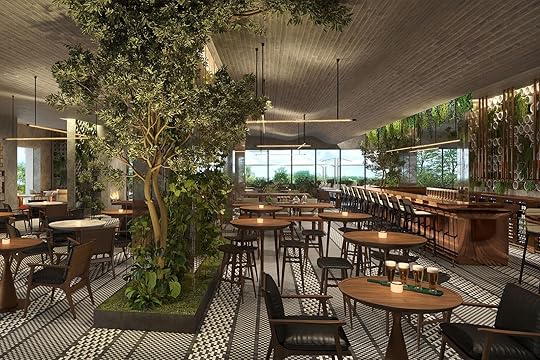
Rendering: Fairmont Golden Prague
Location: Prague, Czech RepublicWhy it’s notable: Revival of a riverfront icon in Prague, just steps from the Charles Bridge and Old Town SquareType of traveler who will love this hotel: Culinary aficionados, the culturally curiousPrice: From $603 per nightSet along the Vltava River in one of Prague’s most recognizable postwar buildings, the newly opened Fairmont Golden Prague signals a fresh chapter for the city’s luxury hotel scene. Once the InterContinental, the 1974 brutalist landmark has reopened after a five-year transformation with 320 rooms and suites. Many rooms feature river views and interiors that blend restored Czech design elements from the 1960s and ’70s with contemporary touches. Dining spans six restaurants and bars, including Zlata Praha, a fine-dining Czech restaurant with sweeping city views, and Golden Eye, a 1970s-inspired venue serving Southeast Asian cuisine. The on-site Fairmont Spa features Prague’s only indoor-outdoor pool, three saunas, and a tranquil garden terrace. Located at the entrance to Pařížská Boulevard and steps from the Charles Bridge, the hotel is both a cultural landmark and a sleek new base for exploring the city.
BookKimpton Algarve São Rafael AtlánticoOpen: Now
Rendering: IHG Hotels & Resorts
Location: Albufeira, PortugalWhy it’s notable: The Kimpton brand’s first hotel in Portugal, set above one of the Algarve’s most scenic beaches with direct coastal accessType of traveler who will love this hotel: Family vacationers, wellness wanderersPrice: From $220 per nightOn a quieter stretch of Portugal’s southern coast near Albufeira, Kimpton Algarve São Rafael Atlántico introduces a more contemporary take on the Algarve’s luxury beach resorts. Famous for its sculpted limestone formations and swimmable turquoise waters, the beach is just a short walk from the resort’s palm-lined gardens. Inside, the 149 rooms are pared-back and breezy, with neutral tones and large balconies that face either the Atlantic or the gardens. There are multiple indoor and outdoor pools, including a large saltwater option, plus a full-service spa with Turkish baths, saunas, and a well-equipped gym. Dining options range from a beachfront grill focused on local seafood to a casual café with pastries and fresh juice made onsite. With kid-friendly menus, a calm stretch of beach, and nearby walking trails, the resort is well-suited for both family vacations and relaxed luxury getaways.
BookKimpton Los Monteros MarbellaOpen: Now
Photo: IHG Hotels & Resorts
Location: Marbella, SpainWhy it’s notable: A Costa del Sol revival with sea-facing rooms and dining led by a chef with Michelin-star experienceType of traveler who will love this hotel: Culinary aficionados, family vacationersPrice: From $541 per nightLong favored by European family vacationers, Marbella sits along Spain’s Costa del Sol — a stretch of coastline known as much for its golden beaches and beach clubs as for its proximity to Andalusia’s hill towns and mountain trails. Originally opened in 1962 and now reimagined by IHG, Kimpton Los Monteros Marbella returns as a modern resort with updated rooms, new dining concepts, and expanded wellness offerings. Just 500 meters from the ocean, the 195-room property was redesigned by Barcelona-based studio El Equipo Creativo, with interiors that nod to the region’s Moorish heritage through terracotta tiles, geometric patterns, and organic curves. Rooms, many with sea-facing terraces, are outfitted in natural materials and warm Mediterranean tones. Dining is a central focus, with chef José Carlos García overseeing a culinary program that includes Jara, serving contemporary Andalusian cuisine; Escondido, a rooftop venue offering Mexican-inspired fare and an infinity pool; and La Cabane, a beachfront club designed in collaboration with Dolce & Gabbana. Wellness offerings include a Maison CODAGE spa with hydrotherapy circuits, yoga sessions, and access to nearby golf courses and a racket club.
BookKimpton Main FrankfurtOpen: Now
Rendering: IHG Hotels & Resorts
Location: Frankfurt, GermanyWhy it’s notable: Kimpton’s first hotel in Germany, blending Bauhaus-inspired design with a rooftop restaurant overlooking the city skylineType of traveler who will love this hotel: Culinary aficionados, the culturally curiousPrice: From $220 per nightIn a city where many central hotels still cater primarily to business travelers, the March 2025 opening of Kimpton Main Frankfurt introduces a more style-conscious option in the heart of the financial district. Part of the new FOUR Frankfurt development, the 155-room hotel occupies a restored section of the former Deutsche Bank complex on Junghofstraße. Anni, the on-site brasserie, serves updated European classics, while May offers cocktails and small plates in the lobby lounge. On the rooftop, Lazuli pairs panoramic city views with a wide-ranging dinner menu. Other amenities include a gym, free loaner bikes, and pet-friendly rooms. The hotel is within walking distance of the Frankfurt Opera House, the MMK2 contemporary art museum, and premier shopping along Goethestraße.
BookSIRO Boka PlaceOpen: Now
Photo: SIRO Boka Place
Location: Tivat, MontenegroWhy it’s notable: One of the first hotels in the region to offer integrated diagnostics, performance tracking, and nutrition planning as part of a tech-enabled wellness stayType of traveler who will love this hotel: Adventure enthusiasts, wellness wanderersPrice: From $224 per nightThe Bay of Kotor has long drawn travelers with its fjord-like coastline and old-world towns, but SIRO Boka Place offers a distinctly different reason to visit: it’s one of the few new hotels in the region designed entirely around wellness. Located in Porto Montenegro’s Boka Place neighborhood, the hotel offers a full-spectrum experience focused on physical performance and recovery. The 1,600-square-meter Fitness Lab includes dedicated zones for strength training, cardio, yoga, and Pilates, as well as a 25-meter pool with a retractable roof for year-round swimming. Recovery options include cryotherapy, red light treatment, and IV infusions. At SIRO Table and the rooftop bar SIRO Social, menus center on seasonal produce and regional sourcing, with additional support from an in-house nutritionist for guests seeking tailored plans. Rooms feature thermo-regulated mattresses and built-in wellness features to support rest and recovery, while the hotel’s Porto Montenegro setting places hiking trails, canyoning routes, and sailing excursions within easy reach.
BookAndaz Miami BeachOpen: Now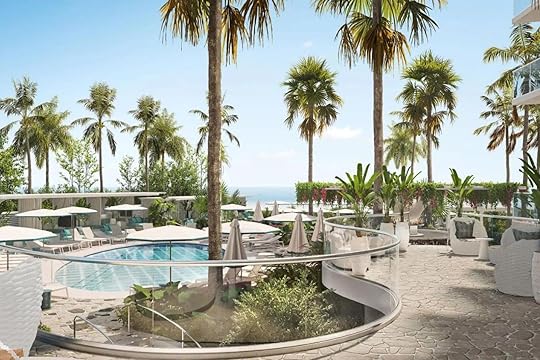
Rendering: Booking
Location: MiamiWhy it’s notable: A preservation project on Miami’s hotel stripType of traveler who will love this hotel: Culinary aficionados, wellness wanderersPrice: From $612 per nightAfter a full transformation of the former Confidante Miami Beach, the new Andaz Miami Beach opened in March as Hyatt’s first Florida property under the Andaz brand. Spread across three towers along Collins Avenue, the 287-room hotel brings a fresh perspective to Miami’s mid-beach scene with a rare ocean-view check-in, private beach, and two redesigned pools framed by striped cabanas and towering palms. Interiors feature mid-century design cues — bright florals, sculptural lighting, and art deco touches — while in-room amenities include custom Sferra linens, Frette robes, and curated film libraries. One of the most distinctive features is the historic 1930s beach house, which was carefully dismantled and reconstructed on-site as a candlelit cocktail bar and lounge. Dining is central to the property’s vision, with a partnership from the José Andrés Group bringing culinary ambition and global recognition.
BookCabot Citrus FarmsOpen: Now
Photo: Cabot Citrus Farms/ Christian Hafer
Location: Brooksville, FloridaWhy it’s notable: Resort-like cottage accommodations for golf lovers, with enough off-course action to feel like a grown-up summer campType of traveler who will love this hotel: Adventure enthusiasts, money-is-no-object travelersPrice: On requestFor travelers who plan their vacations around tee times, Cabot Citrus Farms is a comfortable launch point for exploring one of Florida’s most scenic inland regions. Set on 1,200 acres along Florida’s Nature Coast, the resort transforms the former World Woods Golf Club into a destination for golf and outdoor adventure. The property features 57 holes across four courses, including Karoo and Roost, both 18-hole layouts designed with dramatic elevation changes and strategic features; The Squeeze, a compact 10-hole loop; and The Wedge, an 11-hole par-3 course equipped with lighting for night play. Accommodations include two- and four-bedroom cottages with private pools and generous outdoor living areas. Ideal for both golfers and non-golfers, on-site activities range from axe throwing and archery to bass fishing and clay shooting, with easy access to spring-fed rivers and the hiking trails of Withlacoochee State Forest.
BookField & Stream LodgeOpen: Now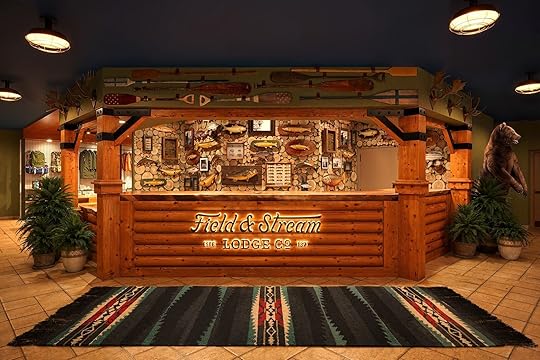
Photo: Field & Stream Lodge
Location: Bozeman, MontanaWhy it’s notable: A national park basecamp where you can book everything from fly fishing to ski days through the lodge’s in-house guidesType of traveler who will love this hotel: Adventure enthusiasts, family vacationersPrice: From $226 per nightField & Stream Lodge Bozeman might be one of the best hotels near Yellowstone for travelers seeking drivable access to the park without roughing it. Just a mile from downtown Bozeman and about two hours from Yellowstone’s North Entrance in Gardiner, the 179-room lodge makes a strong case for extending your national park trip. Rooms range from king suites to bunk rooms designed with fly-fishing and hiking groups in mind. Communal spaces cater to post-trail hangouts, with canoe-shaped fire pits, a large stone fireplace in the Great Room, and an indoor pool and hot tub for unwinding after a day outdoors. Guided fly fishing on local rivers, hiking in the Gallatin Range, skiing at Bridger Bowl, and day trips into Yellowstone can all be arranged through the lodge. When Dry Fly, the on-site restaurant, opens later this year, it will serve everything from hearty breakfasts to beers and burgers.
BookThe Hemlocks at Nantahala Outdoor CenterOpen: Now
Photo: Nantahala Outdoor Center
Location: Bryson City, North CarolinaWhy it’s notable: Guests can book more than 100 outdoor itineraries, from rafting to zip-lining—directly through the city centerType of traveler who will love this hotel: Adventure enthusiasts, family vacationersPrice: From $250 per nightSituated just above the Nantahala River in North Carolina’s gorge country, The Hemlocks brings cabin-style comfort to one of the South’s best adventure hubs. Opened by the Nantahala Outdoor Center in spring 2025, the one- and two-bedroom bungalows have private decks, kitchenettes, and gas fireplaces — ideal for unwinding after a day on the river or trails. Activities like guided whitewater rafting, fly fishing lessons, zip-line canopy tours, and mountain biking on the Flint Ridge trail system all begin from NOC’s main campus, just a short walk from the bungalows. Lake Fontana is close enough for a paddle or a swim, and the scenic overlooks of the Appalachian Trail are an easy drive away. Afterward, guests can relax on the deck or gather around the communal fire pits under the stars.
BookHotel WillaOpen: May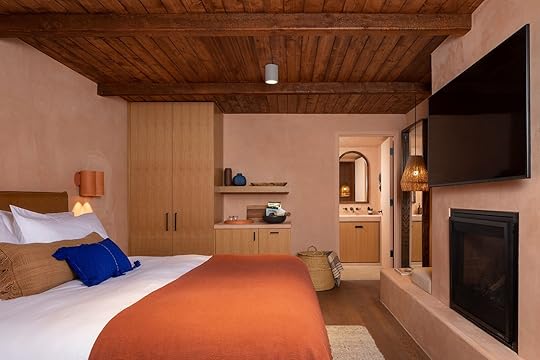
Photo: Hotel Willa
Location: Taos, New MexicoWhy it’s notable: A new creative retreat that channels Taos’ artistic legacy through immersive design, mountain views, and hyper-local diningType of traveler who will love this hotel: The culturally curious, culinary aficionadosPrice: From $250 per nightSet just outside the Downtown Taos Historic District, Hotel Willa will bring a fresh, design-forward stay to one of New Mexico’s most creative towns. Guests will be able to unwind in the pool and heated spa overlooking the Couse pasture and Sangre de Cristo Mountains, or gather around outdoor fire pits under the expansive New Mexico sky. The hotel’s restaurant, Juliette — helmed by local chefs Johnny Ortiz-Concha and Maida Branch — emphasizes seasonally driven produce sourced from its on-site edible garden. Guests interested in contemporary art can explore the on-site gallery and engage with visiting creatives through the hotel’s partnership with The Paseo Project, a Taos-based organization known for public art installations and community events.
BookThe Louie at Davenport HotelOpen: Now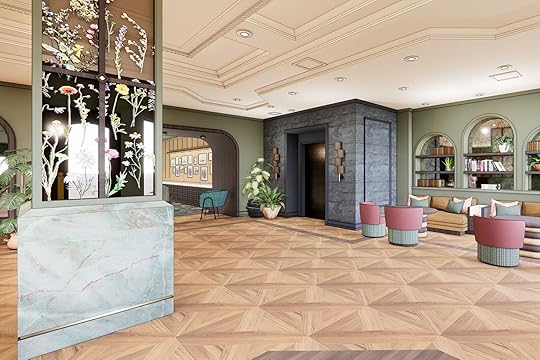
Rendering: Davenport Hotels
Location: Spokane, WashingtonWhy it’s notable: The first hotel in Spokane to introduce butler service, offering personalized luxury in a historic settingType of traveler who will love this hotel: The culturally curiousPrice: From $246 per nightSpokane’s hotel scene has long been anchored by the historic Davenport Hotel, but just across the street, a new addition offers something more intimate. The Louie, a 48-room boutique hotel that opened in April 2025, reimagines the former Davenport Lusso with a residential feel and a thoughtful nod to the city’s hospitality roots. The building once served as the personal residence of Louis Davenport while he oversaw the construction of his namesake hotel in the early 1900s, and that legacy comes through in the details like archival photographs, pressed flowers, and art books set against a palette of peach, olive, and gold. The result is more gallery-apartment than traditional hotel. Each room is single-king, and the property is the first in Spokane to offer butler service. Guests also have access to amenities at the Davenport Hotel, including the spa and dining venues. The location puts guests within walking distance of Riverfront Park, the Centennial Trail, and Spokane’s winery district.
BookPopulus SeattleOpen: Now
Photo: ARTXIV
Location: Seattle, WashingtonWhy it’s notable: The country’s second carbon-positive hotelType of traveler who will love this hotel: The culturally curious, Sustainability-focused travelersPrice: From $399 per nightSeattle’s Pioneer Square, the city’s oldest neighborhood, is known for its historic architecture and vibrant arts scene. Now, it welcomes Populus Seattle, a 120-room boutique hotel breathing new life into the 1907 Westland Building. The restored property blends preserved Douglas fir beams and exposed brick with biophilic design elements inspired by the Pacific Northwest rainforest. Guests enter through a lush, plant-filled lobby that leads to a grand staircase ascending to Salt Harvest, the hotel’s signature restaurant. The rooftop bar, Firn, offers sweeping skyline views and is the first of its kind in Pioneer Square. Accommodations range from the Lupine King Room to the Summit Suite, each featuring large windows, soaking tubs, and curated local art. Populus Seattle’s commitment to sustainability includes planting a tree for every night stayed and achieving carbon-positive status through thoughtful design and operations.
BookTrailborn Grand CanyonOpen: Now
Photo: Trailborn
Location: Williams, ArizonaWhy it’s notable: The first design-forward hotel in the region, offering a modern take on classic Route 66 motor lodgesType of traveler who will love this hotel: Family vacationers, adventure enthusiastsPrice: From $128 per nightTrailborn Grand Canyon is the latest addition to Williams, Arizona’s Route 66 strip, reimagining the roadside hotel with layered Western details and plenty of personality. The 96-room hotel channels Western Americana through velvet headboards, leather-stitched lamps, and walk-in showers, with a design that references classic motor lodges without feeling dated. Amenities include a seasonal outdoor pool, hot tub, bocce court, kids’ play area, and a fire pit with s’mores kits. Camp Hall, the property’s social hub, hosts live music, Wild West Bingo, and movie nights. Family-friendly programming includes guided hikes and stargazing sessions arranged through local partners. The location near the Grand Canyon Railway offers easy access to the South Rim, and nearby attractions include the Canyon Coaster Adventure Park and Bearizona Wildlife Park.
BookTinajaniOpen: Now
Photo: Andean Travel
Location: Tinajani Canyon, PeruWhy it’s notable: One of the highest-altitude luxury tented camps in South America, set at nearly 13,000 feet in a private Andean reserveType of traveler who will love this hotel: Adventure enthusiasts, the culturally curiousPrice: On requestWeather-carved rock formations stretch across Peru’s Tinajani Canyon, a remote valley between Cusco and Lake Titicaca known for its dramatic sandstone spires and high-altitude trails. Here, at nearly 13,000 feet above sea level, Andean has opened its most remote retreat yet: TINAJANI, a six-camp tented hamlet on a 370-acre nature reserve. Each camp consists of a pair of connected tents — one for sleeping and one for relaxing — plus a private deck with a hot tub and sweeping canyon views. Guests gather at a restored farmhouse for breakfast, stargaze by the communal fire pit, or set out on foot or bike to uncover local crafts and wide-open panoramas.
BookMore like thisEpic StaysThe 21 Most Exciting New Hotels Opening in the First Months of 2025Matador Network's Blog
- Matador Network's profile
- 6 followers



